ISO 639-2 wol Linguasphere 90-AAA-aa | ISO 639-1 wo Glottolog wolo1247 | |
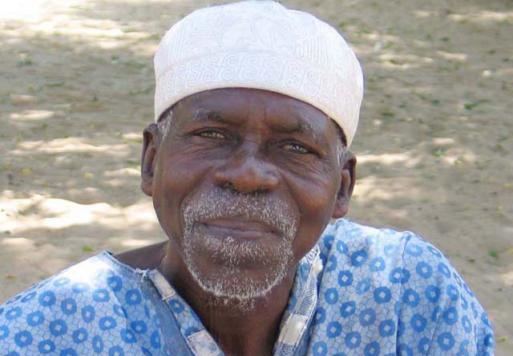 | ||
Native speakers 4.2 million (2006); L2 speakers: ? ISO 639-3 Either: wol – Wolof; wof – Gambian Wolof | ||
Wolof (/ˈwɒlɒf/) is a language of Senegal, the Gambia, and Mauritania, and the native language of the Wolof people. Like the neighbouring languages Serer and Fula, it belongs to the Senegambian branch of the Niger–Congo language family. Unlike most other languages of Sub-Saharan Africa, Wolof is not a tonal language.
Contents
- Geographical distribution
- Classification
- Varieties
- Orthography and pronunciation
- Vowels
- Consonants
- Tones
- Pronoun conjugation instead of verbal conjugation
- Conjugation with respect to aspect instead of tense
- Gender
- Cardinal numbers
- Ordinal numbers
- Conjugation of the temporal pronouns
- Literature
- References
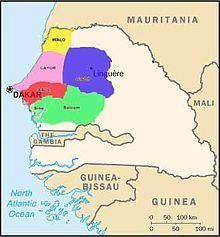
Wolof originated as the language of the Lebu people. It is the most widely spoken language in Senegal, spoken natively by the Wolof people (40% of the population) but also by most other Senegalese as a second language.
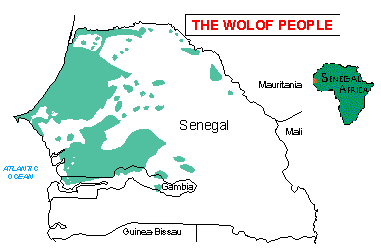
Wolof dialects vary geographically and between rural and urban areas. "Dakar-Wolof", for instance, is an urban mixture of Wolof, French, and Arabic.

"Wolof" is the standard spelling and may refer to the Wolof people or to Wolof culture. Variants include the older French Ouolof and the principally Gambian "Wollof". "Jolof", "jollof", etc., now typically refers either to the Jolof Empire or to jollof rice, a common West African rice dish. Now-archaic forms include "Volof" and "Olof".
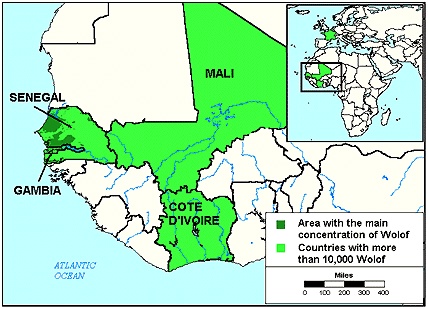
The English language is believed to have adopted some Wolof words, such as banana, via Spanish or Portuguese, and yum/yummy, from Wolof nyam "to taste"; nyam in Barbadian English meaning "to eat" (also compare Seychellois Creole nyanmnyanm, also meaning "to eat").
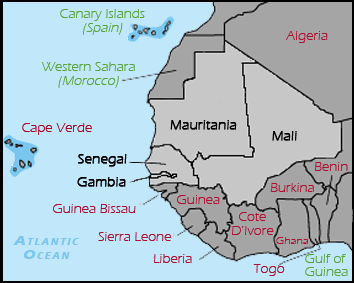
Geographical distribution
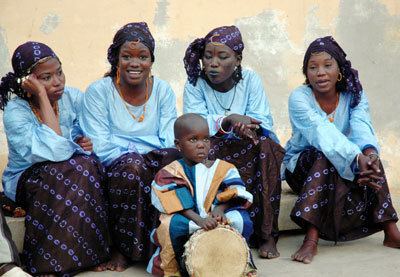
Wolof is spoken by more than 10 million people and about 40 percent (approximately 5 million people) of Senegal's population speak Wolof as their native language. Increased mobility, and especially the growth of the capital Dakar, created the need for a common language: today, an additional 40 percent of the population speak Wolof as a second or acquired language. In the whole region from Dakar to Saint-Louis, and also west and southwest of Kaolack, Wolof is spoken by the vast majority of the people. Typically when various ethnic groups in Senegal come together in cities and towns, they speak Wolof. It is therefore spoken in almost every regional and departmental capital in Senegal. Nevertheless, the official language of Senegal is French.
In the Gambia, about 20–25 percent of the population speak Wolof as a first language, but Wolof has a disproportionate influence because of its prevalence in Banjul, the Gambian capital, where 75 percent of the population use it as a first language. In Serekunda, the Gambia's largest town, although only a tiny minority are ethnic Wolofs, approximately 70 percent of the population speaks and/or understands Wolof. The official language of the Gambia is English; Mandinka (40 percent), Wolof (10 percent) and Fula (15 percent) are as yet not used in formal education.
In Mauritania, about seven percent (approximately 185,000 people) of the population speak Wolof because of the river that is shared with Senegal. There, the language is used only around the southern coastal regions. Mauritania's official language is Arabic; France colonized the tribes and forced them all to speak French as the official language but the most common language of all other tribes is their common language of Wolof.
Classification
Wolof is one of the Senegambian languages, which are characterized by consonant mutation. It is often said to be closely related to the Fula language because of a misreading by Wilson (1989) of the data in Sapir (1971) that have long been used to classify the Atlantic languages.
Varieties
Senegalese/Mauritanian Wolof and Gambian Wolof are distinct national standards: they use different orthographies and use different languages (French vs English) as their source for technical loanwords. However, both the spoken and written languages are mutually intelligible. Lebu Wolof, on the other hand, is unintelligible with standard Wolof, a distinction that has been obscured because all Lebu speakers are bilingual in standard Wolof.
Orthography and pronunciation
Note: Phonetic transcriptions are printed between square brackets [] following the rules of the International Phonetic Alphabet (IPA).
The Latin orthography of Wolof in Senegal was set by government decrees between 1971 and 1985. The language institute "Centre de linguistique appliquée de Dakar" (CLAD) is widely acknowledged as an authority when it comes to spelling rules for Wolof.
Wolof is most often written in this orthography, in which phonemes have a clear one-to-one correspondence to graphemes.
Additionally, two other scripts exist: a traditional Arabic-based transcription of Wolof called Wolofal, which dates back to the pre-colonial period and is still used by many people, and the Garay script, dating to 1961, which has been adopted by a small number of Wolof-speakers
The first syllable of words is stressed; long vowels are pronounced with more time, but are not automatically stressed, as they are in English.
Vowels
The vowels are as follows:
There may be an additional low vowel, or this may be confusion with orthographic à.
All vowels may be long (written double) or short. /aː/ is written ⟨à⟩ before a long (prenasalized or geminate) consonant. When é and ó are written double, the accent mark is often only on the first letter.
Vowels fall into two harmonizing sets according to ATR: i u é ó ë are +ATR, e o a are the −ATR analogues of é ó ë. For example,
Lekk-oon-ngeen /lɛkːɔːnŋɡɛːn/[eat-PAST-FIN.2pl]'Y'all ate.'Dóór-óón-ngéén /doːroːnŋɡeːn/[hit-PAST-FIN.2pl]'Y'all hit.'There are no −ATR analogues of the high vowels i u. They trigger +ATR harmony in suffixes when they occur in a root, but in a suffix they may be transparent to vowel harmony.
The vowels of some suffixes or enclitics do not harmonize with preceding vowels. In most cases following vowels harmonize with them. That is, they reset the harmony, as if they were a separate word. However, when a suffix/clitic contains a high vowel (+ATR) occurs after a −ATR root, any further suffixes harmonize with the root. That is, the +ATR suffix/clitic is "transparent" to vowel harmony. An example is the negative -u- in,
Door-u-ma-leen-fa /dɔːrumalɛːnfa/[begin-NEG-1sg-3pl-LOC]'I did not begin them there'where harmony would predict *door-u-më-léén-fë. That is, i u behave as if they are their own −ATR analogues.
Authors differ in whether they indicate vowel harmony in writing, as well as whether they write clitics as separate words.
Consonants
Consonants in word-initial position are as follows:
All simple nasals, oral stops apart from q and glottal, and the sonorants l r y w may be geminated (doubled), though geminate r only occurs in ideophones. (Geminate consonants are written double.) Q is inherently geminate and may occur in initial position; otherwise geminate consonants and consonant clusters, including nt, nc, nk, nq ([ɴq]), are restricted to word-medial and -final position. Of the consonants in the chart above, p d c k do not occur in medial or final position, being replaced by f r s and zero, though geminate pp dd cc kk are common. Phonetic p c k do occur finally, but only as allophones of b j g due to final devoicing.
Minimal pairs of geminates (glosses in French):
nëb 'pourri' [rotten], nëbb 'cacher' [to hide]; dag 'valet' [a valet], dagg 'couper' [to cut]; dëj 'funérailles' [funerals], dëjj 'vulve (injurieux)' [a cunt]; gal 'or blanc', gall 'régurgiter'; gëm 'croire' [to believe], gëmm 'fermer les yeux' [to close one's eyes] ; fen 'mentir' [to lie], fenn 'quelque, nulle part' [somewhere, nowhere]; woñ 'essorer', woññ 'compter' [to count] ; goŋ 'cynocéphale' [a dog-headed ape], goŋŋ 'sorte de lit' [a kind of bed] ; bët 'oeil' [an eye], bëtt 'trouver, percer' [to find]; Jaw (a family name), jaww 'firmament' [heaven]; boy 'prendre feu' [to catch fire], boyy 'être resplendissant'; also fecc 'danser' [to dance], sedd 'froid' [cold], bakkan 'nez' [nose], dëpp 'renverser'Tones
Unlike most sub-Saharan African languages, Wolof has no tone. Other non-tonal languages of Africa include Amharic, Swahili and Fula.
Pronoun conjugation instead of verbal conjugation
In Wolof, verbs are unchangeable stems that cannot be conjugated. To express different tenses or aspects of an action, personal pronouns are conjugated – not the verbs. Therefore, the term temporal pronoun has become established for this part of speech. It is also referred to as a focus form.
Example: The verb dem means "to go" and cannot be changed; the temporal pronoun maa ngi means "I/me, here and now"; the temporal pronoun dinaa means "I am soon / I will soon / I will be soon". With that, the following sentences can be built now: Maa ngi dem. "I am going (here and now)." – Dinaa dem. "I will go (soon)."
Conjugation with respect to aspect instead of tense
In Wolof, tenses like present tense, past tense, and future tense are just of secondary importance, they play almost no role. Of crucial importance is the aspect of an action from the speaker's point of view. The most important distinction is whether an action is perfective, i.e., finished, or imperfective, i.e., still going on, from the speaker's point of view, regardless whether the action itself takes place in the past, present, or future. Other aspects indicate whether an action takes place regularly, whether an action will take place for sure, and whether an action wants to emphasize the role of the subject, predicate, or object of the sentence. As a result, conjugation is not done by tenses, but by aspects. Nevertheless, the term temporal pronoun became usual for these conjugated pronouns, although aspect pronoun might be a better term.
Example: The verb dem means "to go"; the temporal pronoun naa means "I already/definitely", the temporal pronoun dinaa means "I am soon / I will soon / I will be soon"; the temporal pronoun damay means "I (am) regularly/usually". Now the following sentences can be constructed: Dem naa. "I go already / I have already gone." – Dinaa dem. "I will go soon / I am just going to go." – Damay dem. "I usually/regularly/normally/am about to go."
If the speaker absolutely wants to express that an action took place in the past, this is not done by conjugation, but by adding the suffix -(w)oon to the verb (in a sentence, the temporal pronoun is still used in a conjugated form along with the past marker).
Example: Demoon naa Ndakaaru. "I already went to Dakar."
Gender
Wolof does not mark for grammatical gender: there is one pronoun encompassing the English 'he', 'she', and 'it'. The descriptors bu góor (male / masculine) or bu jigéen (female / feminine) are often added to words like xarit, 'friend', and rakk, 'younger sibling' to indicate the person's sex.
Markers of noun definiteness (usually called "definite articles") agree with the noun they modify. There are at least ten articles in Wolof, some of them indicating a singular noun, others a plural noun. In Urban Wolof, spoken in large cities like Dakar, the article -bi is often used as a generic article when the actual article is not known.
Any loan noun from French or English uses -bi: butik-bi, xarit-bi "the boutique, the friend"
Most Arabic or religious terms use -ji: jumma-ji, jigéen-ji, "the mosque, the girl"
Four nouns referring to persons use -ki/-ñi:' nit-ki, nit-ñi, 'the person, the people"
Plural nouns use -yi: jigéen-yi, butik-yi, "the girls, the boutiques"
Miscellaneous articles: "si, gi, wi, mi, li".
Cardinal numbers
The Wolof numeral system is based on the numbers "5" and "10". It is extremely regular in formation, comparable to Chinese. Example: benn "one", juróom "five", juróom-benn "six" (literally, "five-one"), fukk "ten", fukk ak juróom benn "sixteen" (literally, "ten and five one"), ñent-fukk "forty" (literally, "four-ten"). Alternatively, "thirty" is fanweer, which is roughly the number of days in a lunar month (literally "fan" is day and "weer" is moon.)
Ordinal numbers
Ordinal numbers (first, second, third, etc.) are formed by adding the ending –éél (pronounced ayl) to the cardinal number.
For example, two is ñaar and second is ñaaréél
The one exception to this system is "first", which is bu njëk (or the adapted French word premier: përëmye)
Conjugation of the temporal pronouns
In urban Wolof it is common to use the forms of the 3rd person plural also for the 1st person plural.
It is also important to note that the verb follows certain temporal pronouns and precedes others.
Literature
The New Testament was translated into Wolof and published in 1987, second edition 2004, and in 2008 with some minor typographical corrections.
Boubacar Boris Diop published his novel Doomi Golo in Wolof in 2002.
The 1994 song "7 Seconds" by Youssou N'Dour and Neneh Cherry is partially sung in Wolof.
